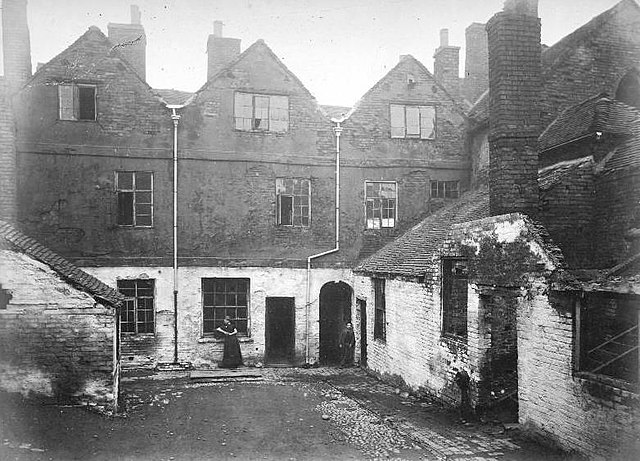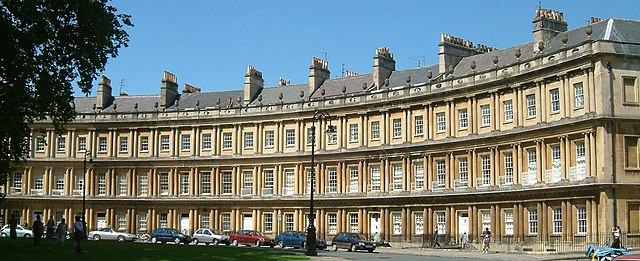Back-to-backs are a form of terraced houses in the United Kingdom, built from the late 18th century through to the early 20th century in various forms. Many thousands of these dwellings were built during the Industrial Revolution for the rapidly increasing population of expanding factory towns. Back-to-backs share party walls on two or three of their four sides, with the front wall having the only door and windows.
Street-fronted back-to-back terraces in Harold Grove, Leeds
Back-to-back housing courtyard, 1883
Plans for houses in Nottingham, 1844
With no rear yard, across-street washing lines are employed with a pulley operated from street level.
Terraced houses in the United Kingdom
Terraced houses have been popular in the United Kingdom, particularly England and Wales, since the 17th century. They were originally built as desirable properties, such as the townhouses for the nobility around Regent's Park in central London, and the Georgian architecture that defines the World Heritage Site of Bath.
A row of typical British terraced houses in Manchester
The Circus at Bath is a classic example of a Georgian terrace.
Early 19th-century terraced houses near Waterloo, London
Many terraced houses were built in the Rhondda in the mid to late 19th century, as they could accommodate migrants within the mountainous landscape.








